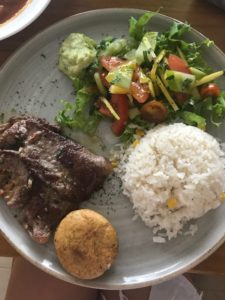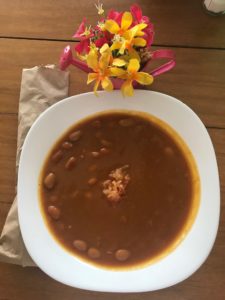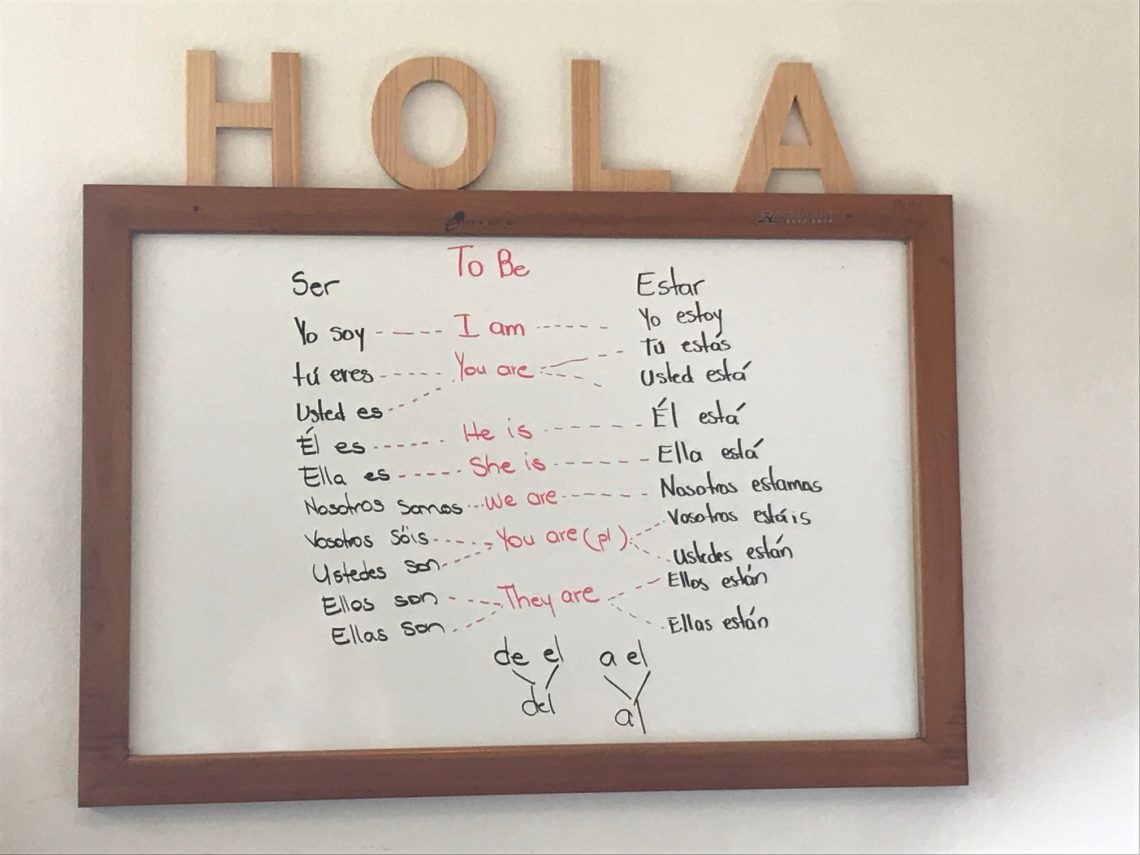
Aprendiendo Español | Learning Spanish
“Why do you want to learn Spanish?”, I’ve been asked. Me gusta, is the short answer. I like it. And because Spanish is a widely spoken language, it’ll make my travels through any Spanish speaking country much easier. It’s supposedly an “easy” language to learn, and I want the challenge of actively learning a new language. Though I speak fluent English and conversational Chinese, I acquired both these through osmosis, rather than through an form of active studying. French, Italian, Japanese have all been attempted in the past, but nothing stuck.
My goal is to be able to have basic conversations with others. During the process of learning Spanish, I’ve 1) developed a whole new level of appreciation for my parents and what they must have gone through when they first moved to Canada and the struggles they still have speaking English, and 2) I’ve come to realise that language shapes how we think.
About the latter point — how do we articulate and share what we think? Via the words in our language. Not only do words gives us the tools to describe feelings, ideas, places, things, but they also play a huge part in subtly shaping how we think. If the language is very structured and formal and requires piecing pieces together (German, supposedly, as told to me recently by a German), then do the native speakers of that language develop the habit of being more structured and analytical? Would seem to be the case for Germans and German!
In español specifically, I came to realise this early on when learning the two verbs for “to be”. “Ser” and “Estar”. At a very high level, Ser is for describing permanent things and Estar for temporary things. There are generally very set rules/accepted practices about when to use ser and when to use estar, but sometimes, you can use estar instead of ser when you want to imply something is temporary instead of permanent. In English, there is only one version of “to be” and anything else needs to be explained through other auxiliary words. This idea blew my mind and made me realise the impact language has on thoughts and culture.
Now, to share some memories of how certain words have found a permanent place in my mind:
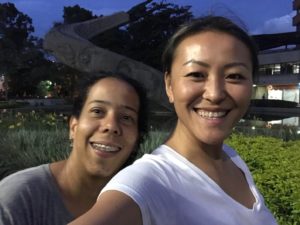
Derecho, Derecha, Ascierda. Straight, right, left. Natalia, my first Airbnb family’s daughter, asked me if I wanted to go bike riding with her. Of course I said yes, so after my class on Thursday, we headed out together. Natalia speaks very very little English, so it was interesting and extremely challenging communicating with her. She had a bike, but we needed to get one for me, so we walked to Estadio station and she handed over her ID to borrow a shared bike for me to use. We biked through heaving, chaotic, rush hour traffic around Estadio, where I nervously tried to follow closely and understand her directions of derecho, derecha, ascierda. She showed me a little park and monument, then we had a cerveza before biking back home. Almost as nerve wracking as that time Carter and I biked from uptown NY all the way down Broadway and back to SOHO.
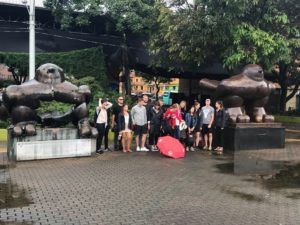
Paraguas. Aka umbrellas. Literally translates to “for water”. Halfway during the Real City Walking Tour, it started to rain quite heavily, and in the busy, vendor filled shops and carts of the Centro district, there was no shortage of venders shouting: “paraguas!” Luckily, Monsa, our guide had an extra umbrella for me, and I was also able to borrow a sweater from another traveller. The weather in Medellin is unpredictable and changes throughout the day. Being October, it’s also rainy season, so everyday is there usually a little sprinkle of rain or even a big downpour.
Cajero automatico. It’s what they call ATMs here. I had finally chosen a pair of (knockoff) shoes and was ready to pay. I want to do some hiking and left my old pair that were breaking down and water logged, in Costa Rica. Tarjeta de credito? I asked if I could pay with credit card. No the girl says, only if you’re buying 100,000 COP worth of goods, is what I was able to deduce after some confusion. Efectivo (cash) only. Unfortunately I had about 10,000 COP in cash left. I manage to google translate and find out the words for ATM, and as an example of how patient and nice these people are, the store keeper walks me to the nearest ATM and waits. She warns me not to use my cell phone on the street, and patiently waits while I try my card. No luck with the card though, so I am forced to spend the next hour searching for an intercambio por dinero so I can convert some cash into COP.
Zanahoria. Carrots. Post-español class, a few students and I have developed a habit of grabbing lunch together. There’s a little colombian restaurant with an excellent menu del dia that we frequent. The masera (waitress) is usually very patient with us. The second time we went, the two choices for soup were frijoles (beans, a word I learned very early on in Costa Rica) or crema de zanahoria. What in the world is zanahoria? We all looked at each other with stupid looks. Only after whipping out my google translate did we realise that it meant carrot. With a collective sigh of relief, we said, yes, we’d all like the crema de zanahoria por favor!!
